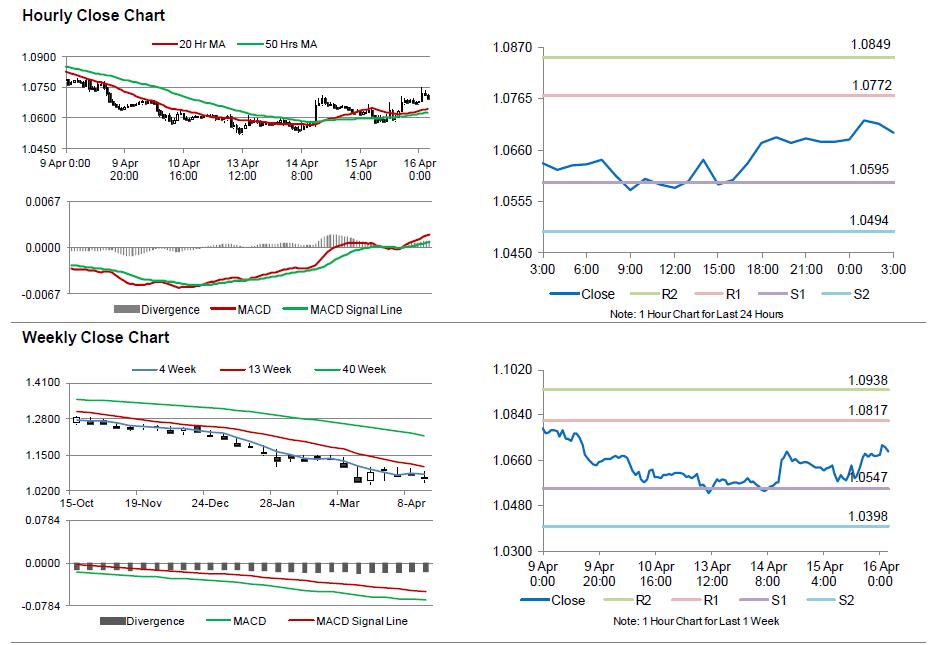For the 24 hours to 23:00 GMT, the EUR rose 0.24% against the USD and closed at 1.0676.
Yesterday, the ECB, in its policy meeting, decided to hold interest rates steady at 0.05%, in line with market estimates. Additionally, the ECB Chief, Mario Draghi, in his post-decision press conference, mentioned that the massive asset purchase program was proceeding smoothly and was having a positive impact on the Euro-zone’s economic activity and will gradually strengthen in the months ahead.
In other economic news, final estimate of Germany’s consumer price index remained unchanged at 0.5% on a monthly basis in March, at par with market expectations. Meanwhile, the Euro-zone’s seasonally adjusted trade surplus widened to €22.0 billion in February, compared to a revised trade surplus of €21.2 billion recorded in the prior month.
The greenback lost ground, after industrial production in the US dropped 0.6% in March, following a minimal rise of 0.1% in the previous month. Markets were expecting it to fell 0.3%. Meanwhile, the NAHB housing market index registered a rise to 56.0 in April, compared to a revised level of 52.00 in the prior month.
Separately, the Fed’s latest Beige Book report indicated that during mid-February and the end of March, the US economy improved “modestly” or “moderately” across most of the districts, whereas growth in few districts held steady. However, consumer spending growth was mixed across the districts.
In the Asian session, at GMT0300, the pair is trading at 1.0695, with the EUR trading 0.18% higher from yesterday’s close.
The pair is expected to find support at 1.0595, and a fall through could take it to the next support level of 1.0494. The pair is expected to find its first resistance at 1.0772, and a rise through could take it to the next resistance level of 1.0849.
Trading trends in the pair today are expected to be determined by the US initial jobless claims data, scheduled later today.
The currency pair is trading above its 20 Hr and 50 Hr moving averages.

